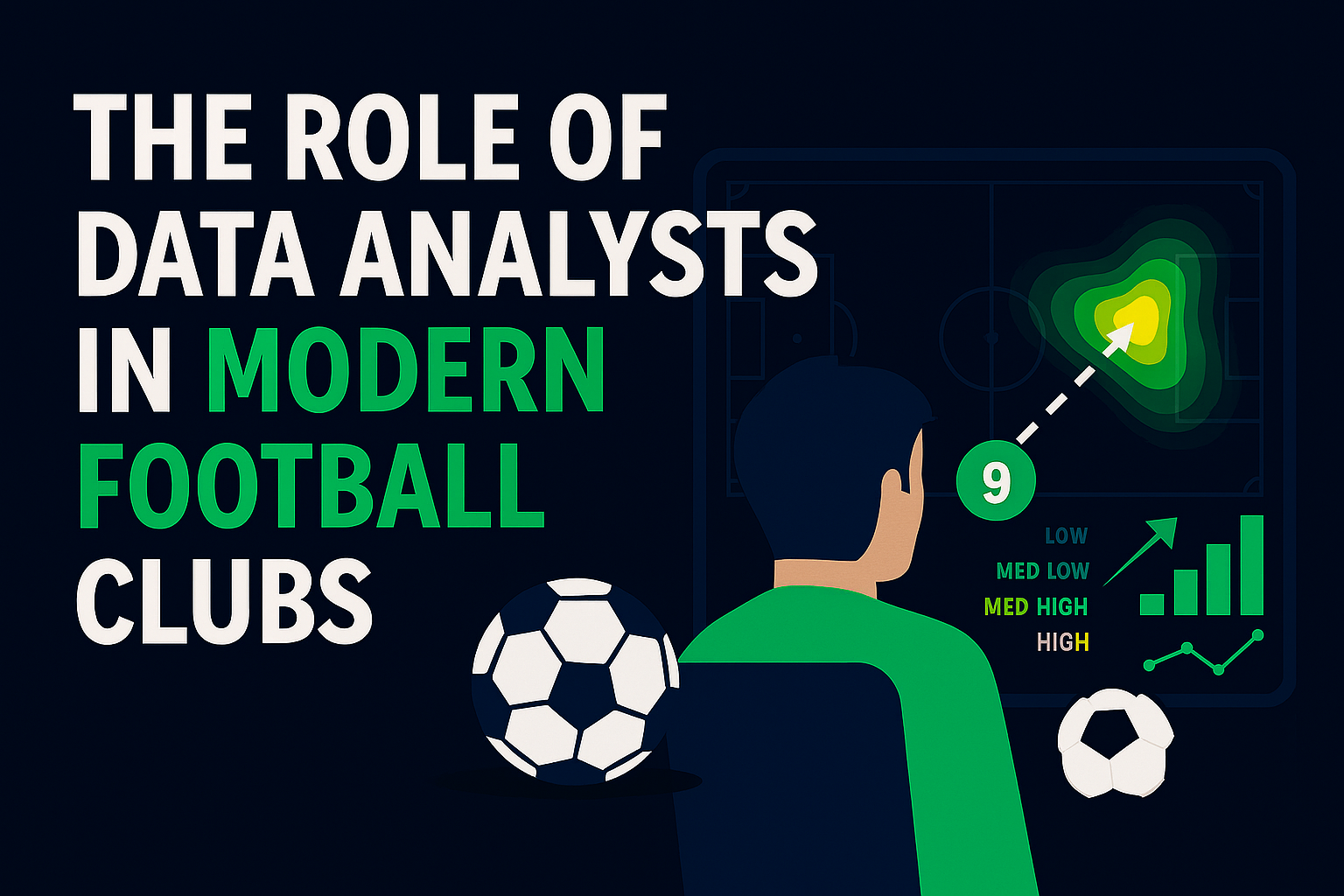In elite football today, numbers matter. Clubs rely on data analysts to turn raw tracking feeds and event data into clear, tactical actions — from recruitment to preventing injuries. This article explains what football data analysts do, how they work with coaches, and why the role is very valuable.
At a glance
Data analysts transform tracking and event data into:
- Heat maps & passing networks that show player influence.
- Performance dashboards for fitness and recovery.
- Recruitment models to identify undervalued talent.
From clipboards to code — the evolution of the role
Ten years ago the analyst’s notebook was full of manual charts and video timestamps. Today, tracking systems and wearable GPS vests produce millions of datapoints every week. Analysts combine these feeds with event data (passes, shots, tackles) to produce digestible outputs — not raw spreadsheets, but clear visuals and recommendations coaches can act on.
What analysts actually do during the week
The daily routine varies by club, but a typical week includes match analysis, opponent scouting, recruitment models, and performance monitoring. Ahead of a fixture an analyst will prepare a tactical brief with pressing maps, expected goals (xG) trends, and passing channels the opponent prefers. That report becomes the basis for training drills and match tactics; it’s why modern pre-match meetings look more like data briefings than pep talks.
Shaping tactics and match preparation
Analysts don’t decide tactics — coaches do — but they supply the evidence. For example, a report might show an opponent presses most effectively on their left flank, so a manager can plan overloads on the opposite side. Visuals such as passing networks or sequence maps make these tactical insights obvious in team meetings and accelerate decision-making.
Recruitment: finding value with numbers
Recruitment is another high-impact area. Instead of relying solely on scouting opinion, clubs now use data models to find players with the right profile for a given system. An analyst might flag a midfielder in a smaller league whose progressive passing and ball-carrying metrics closely match a target profile — often resulting in cost-effective signings that fit the coach’s style.
Monitoring health and workload
Wearables and GPS tracking feed physiological data to the medical and sports science teams. Analysts build workload models that flag increased injury risk: sudden spikes in sprint distance, too many high-intensity efforts, or inadequate recovery between matches. Acting early can prevent injuries, keeping key players available across long seasons.
The human skillset: more than math
Good analysts are equally fluent in football and in data. Technical skills (Python, SQL, visualization libraries) are essential, but so is the ability to tell a clear story. The best outputs are short, visually compelling, and anchored to decisions — which is why many analysts focus as much on presentation as on model accuracy.
Live analysis — making decisions in real time
During matches, some analysts sit close to the dugout and provide quick tactical pointers — a nudge to the coach about a player’s heat map, or a substitution suggestion backed by distance covered and pressing efficiency numbers. These rapid interventions are informed by live dashboards and concise communication channels.
Tools of the trade
Common tools include event-data providers (Opta, StatsBomb), video platforms (Wyscout), and general-purpose tools such as Python (Pandas, NumPy), SQL for data extraction, and visualization software like Tableau or custom D3 dashboards. Many clubs also build internal platforms to centralize scouting, medical and performance data.
Why clubs that embrace analytics often win
Clubs that integrate analytics into decision-making — from scouting to training load management — gain marginal advantages that add up over a season. Examples in recent years show smaller clubs using analytics to punch above their weight, identifying undervalued signings and optimizing player availability through smarter load management.
The Future of Football Analytics
As technology advances, the role of football data analysts is evolving rapidly. Artificial intelligence and machine learning are enabling deeper insights, from predicting match outcomes to optimizing set-piece routines. For fans of leagues like the English Premier League or Ligue 1, this means more competitive matches, as teams leverage data to outsmart rivals. The football data analyst is a bridge between raw numbers and on-field decisions. They provide the evidence that shapes tactics, recruitment and player welfare. In modern football, where small advantages decide outcomes, the analyst’s work is not optional — it’s essential.

